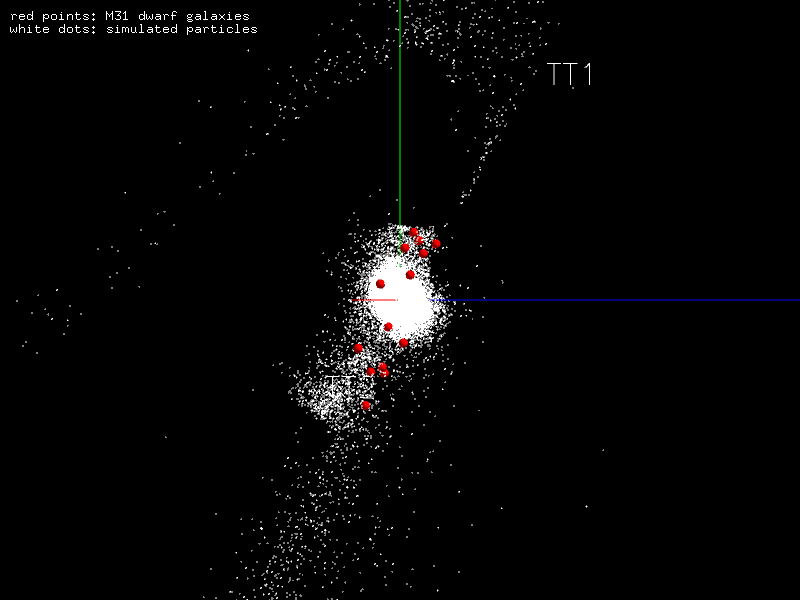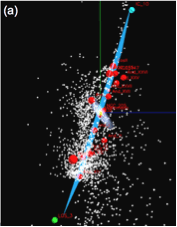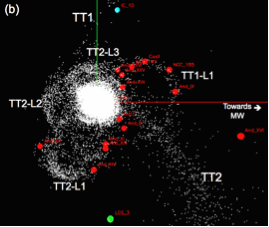
A huge structure of galaxies has recently been discovered around Andromeda. This immense disc, 1,3 million light years across but only 45 000 light years thick, is intriguing astrophysicists. But there is something even more enigmatic than this rather special morphology : the galaxies making up the disc appear to be corotating.
The existence of this structure is is particularly difficult to understand within the framework of the current theory of the formation of large galaxies. It is believed in effect that the largest galaxies, like Andromeda or the Milky Way, accreted the smaller galaxies which were formed in the early Universe over 10 billion years ago.
To explain this discovery, one must suppose that the dwarf galaxies arranged themselves so as to have a common and rather special axis.
A research team, including scientists from the Laboratoire Galaxies, Etoiles, Physique et Instrumentation GEPI [1] of the Observatoire de Paris has investigated this problem. It has explored a different theoretical model in which Andromeda would be the product of a major merger , a prediction in agreement with its structure and with the theory of the hierarchical formation of galaxies.
To support this theory, the team has carried out a series of simulations, and obtained images of the Andomeda galaxy and its attendant satellites.
Videos
Available for download :
avi |
flv |
(Observatoire de Paris / GEPI / Sylvain Fouquet, François Hammer)
Images


(Observatoire de Paris / GEPI / Sylvain Fouquet, François Hammer)
On the left, a side view of Andomeda, as observed. The satellites (red points) are well confined to a plane, as are the « particles » (white points) resulting from the simulation. On the right, the plane has been rotated by 90 degrés, so as to view it from « above ».
This image in fact reveals how this vast plane was formed. During galactic mergers, enormous quantities of matter are ejected via gigantic tidal streams (labelled as TT1 and TT2) which form in a specific plane, called the orbital plane. When some of this matter « falls back » onto the galaxy, it does so along gigantic looped paths which are in fact predicted on the basis of gravity . The satellites do not occupy all the loops, since some are presumably destroyed by a second passage in the vicinity of Andromeda.
The fact that virtually all the satellites are found along these calculated loops, as well as the prediction of all their motions, leaves little doubt about the pertinence of this mechanism. However, it does raise many questions about the origin of these galaxies. They were presumably formed in the tidal streams, which would imply that they should have no dark matter, in contrast to the huge amounts currently supposed. The question remains open.
Reference
The vast thin plane of M31 corotating dwarfs : an additional fossil signature of the M31 merger and of its considerable impact in the whole Local Group published online 10 avril 2013 in Monthly Notices of the Royal Astronomical Society.
[1] The Galaxies, Etoiles, Physique et Instrumentation GEPI laboratory is a science departement of Observatoire de Paris. It is associated to CNRS and Université Paris Diderot

